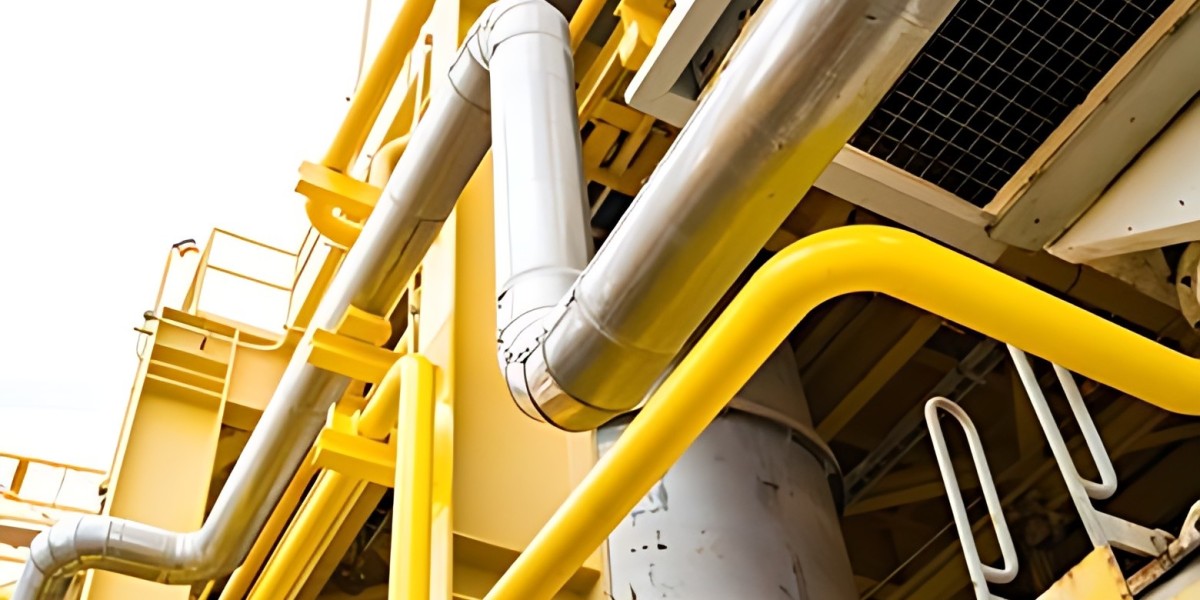Central gas systems represent a cutting-edge solution for delivering natural gas or propane to multiple appliances within a home or commercial setting. Unlike standalone gas systems, central gas systems provide a more streamlined and efficient approach to energy distribution. In this blog, we will explore the various aspects of central gas systems, from their benefits and components to their installation and maintenance.
Understanding Central Gas Systems
Central gas systems, also known as gas distribution systems, are designed to provide a centralized source of natural gas or propane for multiple appliances within a building. These systems are typically employed in large homes, industrial facilities, and commercial establishments to optimize energy distribution and ensure maximum efficiency.
Key Components of Central Gas Systems
Gas Supply Line: The central gas system begins with a primary gas supply line, which connects the building to the gas source. This supply line is responsible for delivering gas to the distribution points within the structure.
Gas Meter: To accurately measure and monitor gas consumption, a gas meter is installed at the point where the supply line enters the building. This meter keeps track of the volume of gas used for billing and safety purposes.
Gas Regulator: Gas regulators are vital components that ensure the gas pressure is controlled and maintained at safe levels throughout the central gas system.
Distribution Lines: These lines branch out from the main supply line and carry gas to individual appliances or outlets throughout the building. Distribution lines may be made of various materials, including copper, steel, or flexible piping, depending on the application.
Shutoff Valves: Shutoff valves are installed at critical points along the distribution lines to allow for isolating specific areas or appliances in case of maintenance or emergencies.
Benefits of Central Gas Systems
Enhanced Efficiency: Central gas systems deliver gas more efficiently, reducing energy waste and costs. They ensure that each appliance receives the appropriate gas pressure, optimizing performance.
Space-Saving Design: Central gas systems eliminate the need for multiple individual tanks or cylinders, freeing up valuable space within a building.
Cost Savings: By streamlining gas delivery and reducing energy waste, central gas systems can lead to substantial cost savings over time.
Eco-Friendly: Natural gas, when used efficiently, is a cleaner-burning fuel compared to other energy sources, making central gas systems a more environmentally responsible choice.
Reliability: Central gas systems are designed for reliability, ensuring a steady supply of gas to all connected appliances. This reliability is essential for businesses that rely on uninterrupted gas service.
Installation of Central Gas Systems
The installation of a central gas system is a complex process that should only be carried out by licensed professionals. Here are the key steps involved in the installation:
Assess Building Needs: A professional technician will assess the building's gas requirements, considering the number and types of appliances, gas load, and distribution points.
Design the System: Based on the assessment, a customized central gas system design is created, which includes the layout of distribution lines, regulators, and other components.
Obtain Permits: Before commencing the installation, it is crucial to secure the necessary permits from local authorities to ensure compliance with safety and building codes.
Installation of Components: The gas supply line, meter, regulator, and distribution lines are installed according to the system design. Each component is carefully connected and tested to ensure proper function.
Safety Checks: The system undergoes rigorous safety checks, including pressure testing and leak detection, to confirm that it is operating safely and efficiently.
Appliance Connections: Once the central gas system is in place, gas lines are connected to each appliance, allowing for centralized control and efficient gas distribution.
Maintenance of Central Gas Systems
To maintain the efficiency and safety of central gas systems, regular maintenance is essential. Here are some important maintenance tasks:
Annual Inspections: Schedule annual inspections by a certified technician to check for leaks, corrosion, and the overall condition of the system.
Pressure Testing: Periodic pressure testing of the entire system should be conducted to ensure that there are no leaks or pressure irregularities.
Gas Meter Checks: Ensure that the gas meter is accurate and functioning correctly. If any issues are detected, have it recalibrated or replaced.
Appliance Maintenance: Regularly service and maintain gas appliances connected to the central gas system to ensure they operate efficiently and safely.
Emergency Procedures: Familiarize yourself and your staff with emergency procedures in case of a gas leak or system malfunction. Safety should always be a top priority.
Conclusion
Central gas systems are an excellent solution for efficient, cost-effective, and eco-friendly energy distribution in both residential and commercial settings. They offer numerous benefits, including energy savings, space optimization, and reliability. However, it's essential to prioritize safety and proper maintenance to ensure the long-term performance and safety of your central gas system. Always rely on trained professionals for installation and maintenance to guarantee the success of your central gas system as a sustainable energy solution for your property.



